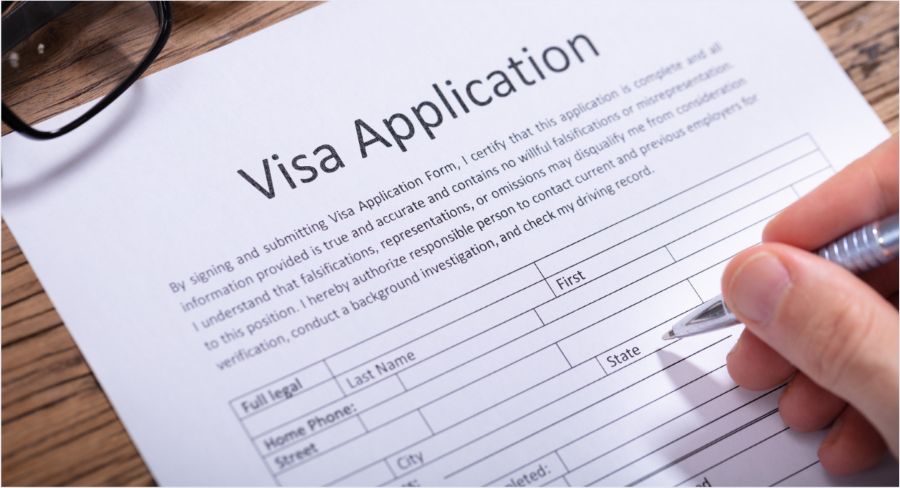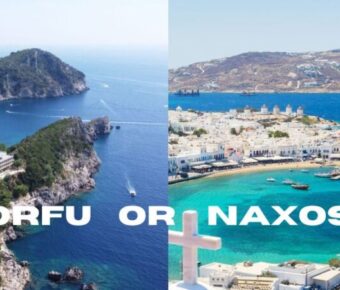
Spain vs. Italy Nomad Visas: 5 Key Differences Digital Nomads Need to Know in 2025
Dreaming of a Mediterranean base for your remote work life? Spain and Italy both rolled out digital nomad visas that are catching the eye of location-independent folks everywhere.
Spain tempts with a flat 24% income tax up to €600,000, while Italy brings its own perks in a country that, honestly, needs no introduction when it comes to food, art, and history.
Your decision really comes down to lifestyle and budget. Spain’s cost of living is generally lower, especially in places like Valencia or Seville, compared to Italian cities like Milan or Rome.
Both countries let you apply for their nomad visas from abroad, which takes a lot of the hassle out of relocating.
Contents
- Key Takeaways
- Overview of Digital Nomad Visas in Spain and Italy
- How Digital Nomad Visas Work
- Key Similarities and Differences
- Eligibility Criteria for Spain vs. Italy Nomad Visas
- Who Can Apply?
- Minimum Income and Financial Stability
- Criminal Record and Clean Record Checks
- Proof of Employment, Self-Employment, or Freelancing
- Visa Application Process and Required Documents
- Spain Digital Nomad Visa Application
- Italy Digital Nomad Visa Application
- Processing Times and Visa Fees
- Essential Documents Needed
- Living in Spain as a Digital Nomad
- Best Digital Nomad Cities: Madrid, Barcelona, and Valencia
- Cost of Living and Quality of Life
- Community, Co-Working Spaces, and Networking
- Living in Italy as a Digital Nomad
- Top Cities and Regions for Digital Nomads
- Italian Culture and La Dolce Vita
- Cost of Living and Healthcare Options
- Taxation and Financial Implications
- Taxes for Digital Nomads in Spain
- Taxes for Digital Nomads in Italy
- Tax Incentives and Benefits
- Healthcare and Insurance Requirements
- Mandatory Health Insurance
- Private vs. Public Healthcare Options
- Medical Insurance for Family Members
- Pathways to Residency, Citizenship, and Permanent Residency
- Obtaining a Residence Permit
- Family Reunification and Dependent Visas
- Steps to Italian and Spanish Citizenship
- Second Residency Options
- Unique Perks and Challenges of Relocating to Spain or Italy
- Work-Life Balance and Digital Nomad Community
- Cultural Integration and Language
- Frequently Asked Questions
- What unique advantages does the Spanish non-lucrative visa offer to digital nomads seeking a serene work environment?
- How does the Italian elective residence visa cater to the needs of remote workers with a penchant for rich cultural experiences?
- Can you unravel the intricacies of the application process for a long-term stay as a digital nomad in Spain versus Italy?
- Are there any hidden gems in terms of locales within Spain or Italy that particularly welcome the digital nomad community?
- What essential financial requirements must one prepare for when considering a move to either Spain or Italy on a nomad visa?
- Could you shed light on the renewal policies for long-term nomadic visas in Spain and Italy, particularly for those embracing a mobile lifestyle?
- More Travel Guides
Key Takeaways
- Spain’s nomad visa offers a 24% flat tax incentive, while Italy’s got its own route for remote workers who crave Mediterranean living.
- Both countries let you apply from home, and Spain even lets you apply after arrival.
- Spain’s living costs are usually lower than Italy’s, so that might sway your choice if you’re watching your wallet.
Overview of Digital Nomad Visas in Spain and Italy

Spain and Italy recently launched digital nomad visa programs to lure in remote workers and freelancers from outside the EU.
These visas are opening doors for anyone who wants to live and work remotely in southern Europe—without living in the shadows.
How Digital Nomad Visas Work
Spain’s visa lets you stay for up to a year at first, and you can renew for two more years. You can apply from your home country or after you’ve landed in Spain, which is a huge relief if you’re the spontaneous type.
Italy’s program, a bit newer and run by the Ministry of Internal Affairs, targets non-EU remote workers employed by foreign companies or running their own businesses.
To qualify for either visa, you’ll need to:
- Be a non-EU citizen
- Work remotely for non-Spanish/Italian companies
- Prove a steady income
- Show you’ve got health insurance
Key Similarities and Differences
The main thing that separates these visas? Taxes. Spain’s 24% flat rate is hard to ignore if you’re earning well.
Spain also lets you choose how you apply, while Italy’s process is still smoothing out its kinks.
Both countries want to see proof of income, but the numbers aren’t exactly the same. Health insurance is a must for both.
At the end of the day, these visas aim to attract global talent and bring fresh energy (and spending) to their local scenes.
Eligibility Criteria for Spain vs. Italy Nomad Visas

Spain and Italy each have their own checklist for digital nomad visas, and you’ll need to tick every box.
Requirements include meeting financial thresholds, verifying your job status, and passing background checks.
Who Can Apply?
Non-EU citizens—that’s who these visas are for. If you’re from the US, UK, or most other places outside the EU, you can apply as long as you hit the other requirements.
Both countries want remote workers, freelancers, and entrepreneurs who can truly work from anywhere. Spain, though, seems extra keen on attracting skilled professionals.
You’ll have to show at least six months of remote work experience in both countries. They want to see you’re not just dabbling.
Italy seems a bit more relaxed about work experience, while Spain looks more closely at your credentials and what kind of remote work you do.
Minimum Income and Financial Stability
Spain wants to see you earn at least 200% of its minimum monthly wage (roughly €2,160/month or €26,000/year). Immigration officials will check this closely.
Italy’s minimum is about €28,000 a year, so it’s a touch higher. They want to be sure you won’t be a drain on their social systems.
Both countries expect proof that your income is solid and steady. You’ll probably need to hand over 6-12 months of bank statements.
If you work for foreign companies, you’ll need contracts or employment letters. Freelancers get extra scrutiny—expect to show your business is legit and viable.
Criminal Record and Clean Record Checks
You’ll need a clean criminal record for both Spain and Italy. Get a background check from your home country.
Spain asks for certificates from wherever you’ve lived in the past five years. Make sure these are apostilled or legalized.
Italy’s requirements are similar, but sometimes they dig deeper. Any hint of financial crime or fraud? You’re out.
Start the background check early—it can drag on for weeks, especially if you need documents certified or translated.
Proof of Employment, Self-Employment, or Freelancing
Spain wants proof you’ve been working remotely for at least a year, with 80% or more of your income coming from outside Spain. Expect to provide contracts, client agreements, or company docs.
Italy asks for proof you’ve been a digital nomad or remote worker for at least six months. Letters from employers or clients will do the trick.
Freelancers in both countries need to show actual contracts, invoices, and maybe a portfolio. It’s not enough to just say you work online.
You’ll also need to prove your work is truly remote. A letter from your employer or evidence your business operates digitally should work.
Visa Application Process and Required Documents

Getting your digital nomad visa for Spain or Italy takes some planning. Each country has its own paperwork and steps, and missing a detail could cost you.
If you’re organized and have your documents in order, you’ll have a much smoother ride.
Spain Digital Nomad Visa Application
Spain gives you two ways to apply—either from home or after you arrive. That flexibility is a game-changer for a lot of people.
Start by gathering your documents and filling out the official application. Then, book an appointment at the Spanish consulate in your country or at the Extranjería office if you’re already in Spain.
Spain’s process is refreshingly straightforward compared to some countries. If you get approved, you’ll have a one-year visa, renewable for up to five years. After that, you could even go for permanent residency.
Your family can come too—spouse and kids are covered under your visa, no need for them to show separate income.
Italy Digital Nomad Visa Application
Italy’s digital nomad visa is fresh on the scene and runs under the Ministry of Internal Affairs’ rules. You have to apply at the Italian consulate in your home country before you head to Italy.
Unlike Spain, you can’t apply while you’re already in Italy as a tourist. You’ll need to get everything sorted before you move.
Once you arrive with your visa, you have to register at the local police station (Questura) within eight days to get your residence permit (permesso di soggiorno). This adds a layer of paperwork and in-person visits.
Italy grants an initial one-year visa, which you can renew if you keep meeting the requirements. Family reunification is possible but a bit stricter than Spain.
Processing Times and Visa Fees
Processing times aren’t the same everywhere. Spain usually wraps up visa applications in 15-20 business days—a pretty quick turnaround for Europe.
Italy can take longer, sometimes 30-45 days, and it’s not unheard of for it to stretch to two months during busy times or if they need more info.
Spain charges about €80 for the visa, while Italy’s fee is around €116. You’ll also pay extra for your residence permit once you arrive:
| Country | Initial Visa Fee | Residence Permit Fee | Total Approximate Cost |
|---|---|---|---|
| Spain | €80 | €15-20 | €95-100 |
| Italy | €116 | €30-50 | €146-166 |
These numbers don’t include translations, notarizations, or health insurance—budget a bit more for those.
Essential Documents Needed
You’ll need a lot of the same documents for both countries, but there are some differences to watch out for:
Both countries want:
- A valid passport (at least one year left)
- Completed application form
- Proof of remote work (contracts or client agreements)
- Proof of income (Spain: €2,334/month, Italy: €28,000/year)
- Health insurance
- Clean criminal record certificate
- Passport-sized photos
Spain-specific:
- Proof of qualifications or professional experience
- Tax residency certificate from your home country
- Last 3 months of bank statements
Italy-specific:
- Proof of accommodation in Italy
- Extra documentation on your business activities
- Visa fee payment receipt
Translate everything into the official language and get documents authenticated. Most visa rejections happen because something’s missing or not properly certified.
Living in Spain as a Digital Nomad

Spain’s a dream for digital nomads—vibrant culture, top-notch infrastructure, and that Mediterranean vibe that’s addictive.
The cost of living is gentle on your wallet, especially compared to other Western European spots. Nomad communities are popping up everywhere.
Best Digital Nomad Cities: Madrid, Barcelona, and Valencia
Madrid, the capital, buzzes with energy but won’t empty your bank account. Internet’s fast (about 300 Mbps), and there’s no shortage of cozy cafés for work sessions. Malasaña and Lavapiés are magnets for expats and nomads.
Barcelona’s the classic favorite—beach, urban life, and a lively startup scene. It’s pricier, but you get both city perks and the sea. The Gothic Quarter and Poblenou are where nomads tend to cluster.
Valencia is coming up fast. You get beaches, gorgeous architecture, and costs about 20% lower than Barcelona. It’s compact, so you can bike or walk almost everywhere.
And don’t forget about the Canary Islands. Tenerife and Gran Canaria have turned into year-round havens for nomads who want that endless spring weather.
Cost of Living and Quality of Life
Your money goes further in Spain than you might expect. You can live comfortably in most cities for €1,500-2,000 a month, including rent.
Here’s a rough breakdown:
- One-bedroom apartment: €600-900 (city center)
- Coworking desk: €100-200/month
- Eating out: €10-15 (casual spot)
- Monthly transit pass: €40-60
The Spanish work-life balance is real. People eat late (9pm is totally normal) and actually relax after work. Healthcare is excellent—Spain ranks high globally for its public system.
Weather-wise, you get options. Barcelona’s winters are mild, Madrid gets hot summers, and the islands are pretty much perfect year-round.
Community, Co-Working Spaces, and Networking
Spain has really embraced digital nomads. Every big city has active Facebook and Meetup groups.
You’ll find language exchanges, nomad meetups, and networking events every week. It’s surprisingly easy to make friends and professional connections.
Co-working spaces are everywhere. Barcelona alone has over 100, from big chains to quirky, homey spots. Most offer flexible passes—€10-15 a day, so you’re not tied down.
Valencia and Madrid host regular startup and tech events, and many co-working spaces organize workshops or social gatherings.
If you’re bringing family, Spain’s a winner. Kids are welcome almost everywhere, and there are plenty of international schools in major cities.
Living in Italy as a Digital Nomad

Italy gives remote workers a chance to soak up history, culture, and modern comforts. With the new digital nomad visa, you can actually live the Italian lifestyle—not just visit it.
Top Cities and Regions for Digital Nomads
Rome keeps drawing digital nomads in with its wild blend of ancient history and surprisingly solid internet. Coworking spaces pop up everywhere in the Eternal City, especially around Trastevere and Monti.
Florence has a magnetic pull for creative types. The Renaissance art scene and a slower pace than Rome make it stand out. Sure, the center’s expensive, but if you poke around Santo Spirito, you’ll find more affordable flats that keep you close to the action.
Milan? It’s Italy’s business engine. If you’re after serious networking or crave big-city energy, Milan delivers with top-notch connectivity and a cosmopolitan crowd.
Looking for something coastal and easier on your wallet? Bari and other Puglia towns mix Mediterranean vibes with reasonable prices. Puglia’s been stepping up its digital infrastructure game lately.
Sicily offers up an island lifestyle that’s hard to beat. Palermo and Catania now boast much better internet than even a few years ago. Your euros stretch further here, especially compared to the north.
Italian Culture and La Dolce Vita
Living in Italy, you’ll notice “la dolce vita” isn’t just a phrase—it’s a way of life. Italians really do put quality of life, food, and relationships ahead of the grind.
Coffee breaks aren’t optional. You’ll find yourself slipping into the rhythm of popping into a café for an espresso, maybe chatting with the barista, instead of eating lunch at your laptop. These little rituals connect you with locals and give you a breather.
Family is at the heart of everything. Shops close for long lunches, and kids stay out late with their parents at restaurants. If you’re a nomad with children, Italy’s warmth toward families is a real plus.
Italians don’t just eat—they make every meal an experience. Even public spaces are designed with an eye for beauty, which can be surprisingly inspiring if you’re working on creative projects.
Picking up some Italian is worth the effort. Even if you fumble through basic phrases, locals appreciate it. Sure, you’ll get by in English in touristy spots, but a little effort opens more doors.
Cost of Living and Healthcare Options
You’ll pay a premium in the north—Milan and Venice rents can be eye-watering. Expect €1,200–1,800 per month for a one-bedroom in Rome or Milan. Down south, say in Naples, that drops to €600–900.
Grocery bills and restaurant prices swing wildly depending on where you shop or eat. Hit up local markets for bargains and fresher produce. Eating out? Budget €15–25 for a dinner, but a quick lunch can be much less.
Internet and utilities won’t break the bank. Most cities run on reliable fiber, but if you’re dreaming of a rural villa, check the Wi-Fi situation first.
Italy’s public healthcare system, SSN, has a solid reputation. When you first arrive on a visa, you’ll need private health insurance—budget €50–120 per month, depending on your age and needs.
Getting around is easy and cheap, thanks to great train connections. In the cities, monthly public transit passes usually run €30–50, so there’s really no need to own a car unless you’re living way out.
Taxation and Financial Implications

Sorting out taxes in Spain and Italy can be a headache, but it’s vital if you want to avoid nasty surprises. Both countries dangle some attractive tax benefits, but the details matter—a lot.
Taxes for Digital Nomads in Spain
Spain’s “Beckham Law” makes its digital nomad tax regime a real contender. Qualifying for the digital nomad visa means a flat 24% tax rate on earnings up to €600,000—much better than the 50% top rate residents might face.
Only income earned in Spain gets taxed under this regime. Once you cross the €600,000 line, the rate jumps to 47%.
To get these perks, you’ll need to:
- Skip Spanish tax residency for the last five years
- Show a minimum income (usually about €30,000 per year)
- Keep Spanish-sourced income under 20% of your total
Taxes for Digital Nomads in Italy
Italy takes a different approach with its “Forfettario Regime.” New arrivals pay just 5% tax for five years if they keep annual income below €85,000.
After five years, it rises to 15%—still better than the regular progressive rates. There’s also the “Impatriate Regime,” letting you pay tax on only 30% of your income, or even 10% if you settle in certain southern regions. You’ll need to stay at least two years for that deal.
Tax Incentives and Benefits
Both countries throw in extra financial perks. Spain makes things easier with a streamlined application process—apply before you arrive or after you’re in-country.
Italy’s wealth tax only affects high-net-worth folks, while Spain’s can hit at lower thresholds (and varies by region).
Some key contrasts:
- Tax Duration: Spain’s perks last five years (sometimes longer); Italy’s 5% rate is strictly five years.
- Flexibility: Spain lets you come and go without losing benefits.
- Regional Extras: Both countries have regions offering sweeteners beyond national programs.
Check if your home country has a tax treaty—this can really change your outcome.
Healthcare and Insurance Requirements

Both Spain and Italy insist on solid health insurance before they’ll give you a digital nomad visa. They want to know you won’t be a burden on their public systems.
Mandatory Health Insurance
Spain requires you to buy private health insurance that covers everything—no gaps, no co-pays, no waiting periods. The policy should match what locals get from the public system.
Expect to pay €50–120 per month, depending on your age and medical history. Many nomads prefer international plans that work across Europe.
Italy also wants private health insurance, but enforcement feels a bit looser. Your policy must cover at least €30,000 in medical expenses. Unlike Spain, Italy doesn’t always care if your insurance comes from an EU company.
Private vs. Public Healthcare Options
In Spain, you’ll need private insurance at first. Once you become a resident and start paying into social security, you can switch to public healthcare. That’s a big plus for anyone staying long-term.
Spain’s public system ranks among the world’s best. Private clinics offer shorter waits and more English speakers—worth it if you’re in a rush or nervous about language barriers.
Italy works differently. You’ll start with private insurance, but after registering as a resident and getting your health card, you can use the national system (SSN).
Many nomads keep private insurance even after qualifying for public care. It’s not mandatory, but it can mean faster specialist appointments and nicer facilities.
Medical Insurance for Family Members
If you’re bringing your family to Spain, everyone needs their own health insurance. Each dependent—kids included—must have coverage matching yours.
Some insurers bundle family packages, which can save money. These usually cover a couple and kids under one plan, often with a small discount.
Italy’s rules for dependents are similar. Kids under 18 usually join a parent’s policy, but you need to spell this out in your paperwork.
Pregnancy and childbirth coverage often cost extra in both countries. If you’re planning to grow your family, look into higher-tier plans or special riders.
Pathways to Residency, Citizenship, and Permanent Residency

Spain and Italy both let digital nomads put down roots, but the roadmaps differ. If you’re hoping to stay long-term, knowing the process helps.
Obtaining a Residence Permit
Spain’s digital nomad visa starts with a 12-month stay. After that, you can renew for three years, moving closer to permanent residency.
To extend your stay, you’ll need to:
- Keep working remotely
- Prove steady income
- Show some integration (think language or local involvement)
- Provide a clean criminal record
Italy’s system is newer and, honestly, still a bit in flux. You’ll typically renew your permit each year, as long as you keep up your remote work.
Both countries require local registration. In Spain, you’ll sign onto the padrón at your town hall to prove your address.
Family Reunification and Dependent Visas
You can bring your family along in both places, but the process isn’t identical.
Spain lets you include family on your initial application or add them later through family reunification. This covers spouses, partners, kids under 21 (or older if dependent), and sometimes parents.
Family members get permits tied to yours, so they can live in Spain while you work.
Italy offers family reunification too, but expect more paperwork. You’ll need to show enough income and suitable housing.
In both countries, dependents usually gain access to public services like healthcare and schools.
Steps to Italian and Spanish Citizenship
Getting citizenship takes time and patience.
Spain:
- 10 years of legal residency (or just 2 for Latin Americans, Portuguese, Filipinos)
- Pass a language test (DELE A2) and a cultural exam
- Usually, you’ll need to give up your previous citizenship, unless you’re from certain countries
Italy:
- 10 years for non-EU citizens, 4 for EU citizens
- Pass a B1-level Italian language test
- Italy allows dual citizenship
Your digital nomad years count toward residency as long as you stay legal. No country offers a “fast track” for nomads, but your time does add up.
Second Residency Options
Not everyone wants full citizenship. Second residency gives you most of the perks with less hassle.
Spain’s “Golden Visa” is a classic route: invest €500,000+ in real estate, or €1 million in Spanish companies or banks. You only need to visit once a year.
Italy’s Investor Visa works similarly, with property investments from €500,000 up.
Some nomads start with a digital nomad visa, then switch to an investment visa after falling for the lifestyle.
Both countries offer tax incentives for new arrivals. Spain’s Beckham Law and Italy’s flat tax schemes can make the move even sweeter for high earners.
Unique Perks and Challenges of Relocating to Spain or Italy

Relocating to Spain or Italy as a digital nomad isn’t all sunsets and spritzes. Each country brings its own quirks, perks, and occasional headaches.
Work-Life Balance and Digital Nomad Community
Spain’s relaxed pace can be a shock at first. The “mañana” attitude might drive you nuts if you’re used to hustle culture, but plenty of nomads find it a welcome change.
Barcelona and Madrid have thriving nomad scenes—regular meetups, coworking spaces, and a friendly vibe. You’ll find it easy to network or just grab a beer with fellow expats.
Italy’s digital nomad community is smaller but growing, especially in Milan and Florence. The Italian way—long lunches, family time—can help you break free from the always-on hamster wheel.
Spain is generally easier on your wallet, especially for accommodation and eating out. That extra wiggle room lets you work less and live more.
Cultural Integration and Language
Learning the language changes everything. In Spain, English gets you pretty far in cities, especially with younger folks. That makes settling in less intimidating.
Italy expects a bit more effort with Italian. Fewer people speak English, even in touristy areas. But if you’re up for the challenge, you’ll dive deeper into the culture.
Spain feels more laid-back socially. It’s easy to strike up conversations, and late-night dinners are the norm.
Every day in Italy feels like a brush with history and art. The culture prizes beauty and tradition—if you’re looking to slow down and soak it in, it’s a dream.
Dealing with bureaucracy is unavoidable in both places. Spain’s digital nomad visa process is usually a bit smoother, with clearer tax breaks for remote workers.
Frequently Asked Questions
Let’s tackle some of the big questions about digital nomad visas in Spain and Italy. These answers might help you figure out which country fits your remote work dreams.
What unique advantages does the Spanish non-lucrative visa offer to digital nomads seeking a serene work environment?
Spain’s non-lucrative visa opens the door to some of Europe’s most tranquil workspaces. Major cities like Barcelona and Valencia actually deliver surprisingly fast internet, so streaming and video calls rarely let you down.
You can settle into smaller coastal towns—think Cadiz—or even tuck yourself away in a sleepy Pyrenees village. The slower pace in these places means you’ll probably find it easier to focus and get into a real groove.
Spain’s famously long daylight hours, especially in summer, let you shape your workday however you want. Fancy a midday siesta or a late-night sprint? Go for it.
How does the Italian elective residence visa cater to the needs of remote workers with a penchant for rich cultural experiences?
Italy’s elective residence visa drops you right into a living museum. Seriously, you could spend lunch breaks wandering past Renaissance art or Roman ruins just outside your door.
You aren’t boxed into one city, either. Hop between historic cities like Florence, Venice, or Rome—just bring your laptop and keep your workflow rolling.
Italian cities are a treat for food lovers. Affordable lunches and that unbeatable coffee culture? They’re a lifesaver for anyone needing a little inspiration (or a caffeine kick) between meetings.
Can you unravel the intricacies of the application process for a long-term stay as a digital nomad in Spain versus Italy?
Spain keeps things relatively straightforward; you’ll usually hear back in about 20 to 30 days. Just gather proof of income (about €2,640 monthly), health insurance, and a clean criminal record.
Italy, on the other hand, tends to move at a more relaxed pace—sometimes it takes 60 to 90 days. You’ll need to show steady income or healthy savings, and the paperwork can feel a bit endless.
You’ll start both applications at the consulate in your home country. Spain lets you handle more of it online, while Italy leans heavily on in-person appointments and document checks.
Valencia in Spain has really stepped up as a digital nomad favorite. It’s less expensive than Barcelona but still has top-notch infrastructure.
Málaga’s tech park is another sweet spot, with coworking spaces practically on the beach. I mean, who doesn’t want to take a swim after work?
In Italy, Bologna feels like the best-kept secret. It’s got a lively student vibe, fast internet, and far fewer tourists than Florence or Rome.
The Canary Islands—especially Las Palmas de Gran Canaria—offer endless summer and a buzzing nomad scene. Down south, Bari and the Puglia region in Italy are starting to catch on, with authentic experiences and much lower living costs.
What essential financial requirements must one prepare for when considering a move to either Spain or Italy on a nomad visa?
Spain wants to see proof of about €2,640 per month (roughly $2,850) in income. You’ll also need health insurance that covers you everywhere in Spain.
Italy asks for a bit more—think €3,000 a month ($3,250) or a solid chunk in your savings account. Their health insurance rules are strict, too; you can’t have any coverage gaps.
Both countries expect you to show where you’ll stay at first, plus a return ticket or proof you can buy one. Don’t forget to budget for visa fees, translating your paperwork, and maybe even a lawyer—sometimes, it’s just easier that way.
Could you shed light on the renewal policies for long-term nomadic visas in Spain and Italy, particularly for those embracing a mobile lifestyle?
Spain tends to be pretty generous with renewals. You can extend your visa for another two years after the first period, and then keep renewing in two-year chunks.
Once you hit five years of legal residency, you’re eligible to apply for permanent residency. That’s a big milestone—worth planning for if you think you’ll stay that long.
Italy? It’s a different story. Renewals usually happen in one-year increments at first, and the authorities expect you to show you’ve actually spent at least six months physically in Italy during your visa period.
If you’re someone who likes to roam, that requirement can be a bit of a headache. You’ll want to keep travel records or even utility bills as proof, just in case.
Both countries want you to submit your renewal application about 60 days before your current visa runs out. Spain’s moved a lot of the process online, which can make things smoother for digital nomads.
Italy, however, still leans heavily on in-person visits at the local immigration offices. It’s not always the most streamlined experience, so bring your patience—and maybe a good book for the waiting room.



